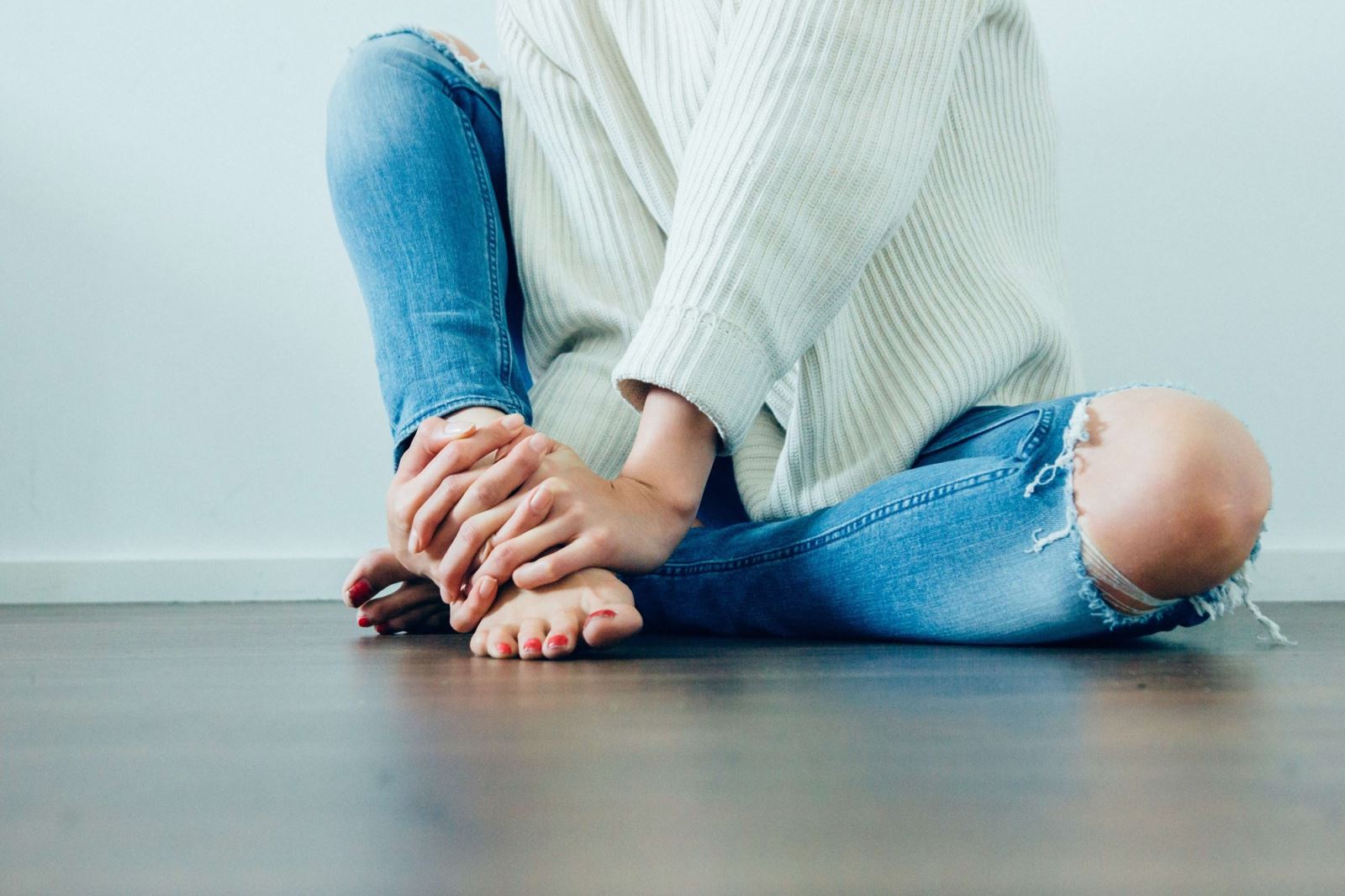How Do I Know If I Have Ankle or Foot Arthritis?

Everyone should be aware of the signs and symptoms of arthritis due to its commonality across the globe. In fact, it’s the most common disability in the United States. The CDC reports that 23% of adults, or 54 million Americans, suffer from arthritis.
Arthritis happens when joints become inflamed or begin to break down. Your joints are the part of the body where two bones meet to allow movement. When joints develop arthritis, it can cause pain, stiffness, swelling, and lack of mobility.
Arthritis can occur in any joints in the body, but foot and ankle arthritis is especially common due to the high amount of pressure on those areas throughout our lives. This causes the cartilage in joints to wear out over time. As people begin aging, arthritis becomes much more common. So how can you know if you have foot or ankle arthritis? Keep an eye out for the following symptoms.
Foot and Ankle Arthritis Symptoms
PAIN
Pain is one of the first warning signs of foot or ankle arthritis. This could feel like a burning sensation, or more like a dull ache. If the pain is caused by arthritis, it will often increase as you use the affected joints more.
Even though movement can increase pain, you should continue moving your joints as much as possible. Avoid high-impact, repetitive movements like running and jumping. But do try to stay active with lower impact activities like swimming, cycling, or walking.
If you’ve been on your feet frequently and start to feel pain, be sure to watch for other warning signs of arthritis. Foot and ankle pain can be caused by any number of issues, so if pain has increased, it may not necessarily be arthritis. However, whatever the cause of your foot or ankle pain is, reaching out to your doctor is still a good idea. The sooner you determine the cause, the more likely you are to avoid further damage.
STIFFNESS
A very common sign of arthritis is stiffness in your joints. When your joints stiffen, your range of motion will feel limited. If your mobility seems to have decreased recently, be on the lookout for other signs of arthritis.
Unlike pain caused by arthritis, arthritis-related stiffness actually improves with movement. While many things besides arthritis can cause joint stiffness, if your range of mobility seems to decrease when you rest and increase as you move, this is a strong indicator that your foot or ankle stiffness is related to arthritis. Because rest makes the stiffness worse, you’ll likely notice that it is the worst when you first wake up in the morning.
Take note of what times of day and which activities you’ve been doing when your joints feel the stiffest. Reach out to a health care professional if the stiffness follows the patterns of arthritis-related stiffness.
SWELLING
Swelling around the joints is very common with arthritis patients. This can be frustrating if you have foot or ankle arthritis because it can make your shoes and socks feel uncomfortable. If you’re seeing this symptom in combination with other symptoms like stiffness and pain, it’s important to seek out treatment and advice from a healthcare provider who can treat arthritis.
Common Causes
OSTEOARTHRITIS
Osteoarthritis is the most common type of arthritis. The majority of people who see arthritis symptoms tend to suffer from this more common form. Caused by the overuse of the joints, people begin to experience it more often as they age since their joints have been used so much throughout the course of their lives.
Weight can also contribute to osteoarthritis. People who carry around more weight on their bodies are putting greater amounts of stress on their feet and ankles. That’s why it’s important to maintain a healthy weight in order to keep your joints functioning properly as you age.
Injury of a certain joint can also increase the likelihood of osteoarthritis. If you’ve hurt your foot or ankle in the past, be sure to be on the lookout for osteoarthritis in that area so you can treat it as it develops.
RHEUMATOID ARTHRITIS
Rheumatoid arthritis is an autoimmune disease. Unlike other forms of arthritis which are caused by wear and tear on the joints, this disease is most likely caused by genetic factors. The symptoms are very similar to other forms of arthritis, however, they may also include fever, fatigue, and loss of appetite.
In order to treat arthritis, it’s important to know which type you have. Rheumatoid arthritis and osteoarthritis may have similar symptoms, but they are actually drastically different diseases that are treated separately. Pay attention to all your symptoms and visit a doctor to see if rheumatoid arthritis might be the cause of your joint issues.
What To Do If You Have Foot or Ankle Arthritis
After noticing symptoms of arthritis, start by making an appointment with a doctor or specialist. The use of X-rays can determine how much damage you have in your joints. Doctors may also use a blood test to determine the type of arthritis. All of that information is essential before you can begin treating the problem and providing relief for your joints.
After determining the cause of your arthritis, a doctor can help you decrease the inflammation in your joints and avoid causing any further damage. Treatments might include anti-inflammatory medicine, shoe changes or inserts, physical therapy, or padding and strapping the joints. In severe cases of arthritis, surgery is sometimes necessary, however, if arthritis can be caught early on, surgery can often be avoided.
Many people will experience foot or ankle arthritis as they age, however, if you exercise, stretch, maintain a healthy weight, and work with your doctor to be sure your feet and ankles are healthy, you have a much higher chance of avoiding it.
If you believe you have foot or ankle arthritis, or if you are experiencing symptoms but don’t know the cause, you can reach out to Teton Foot & Ankle Center for help identifying and treating your problem.
Get in touch!
Call our office if you have any questions about what we do or to schedule an appointment.
